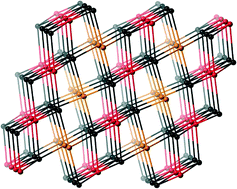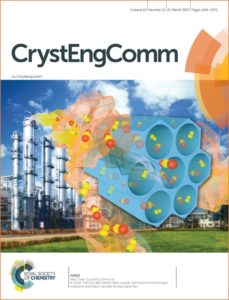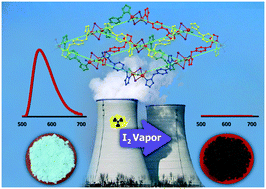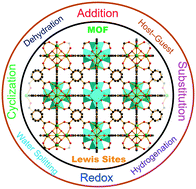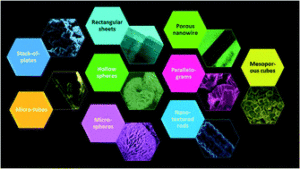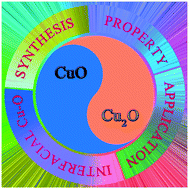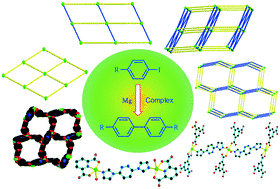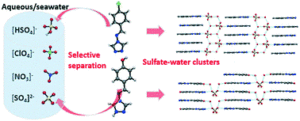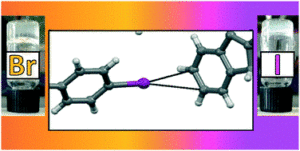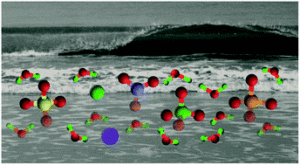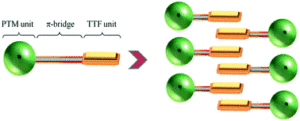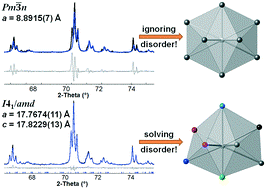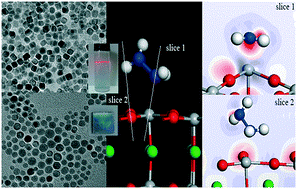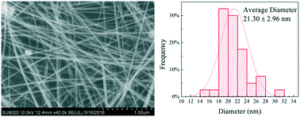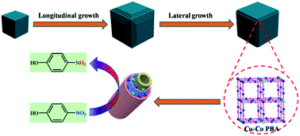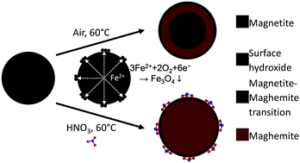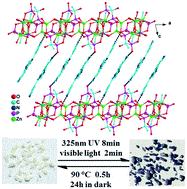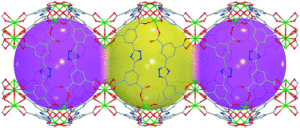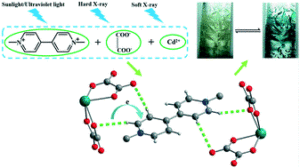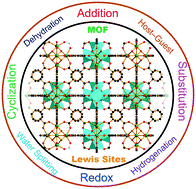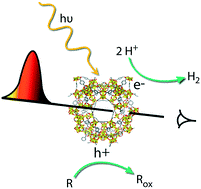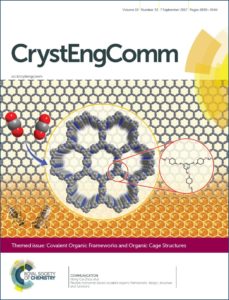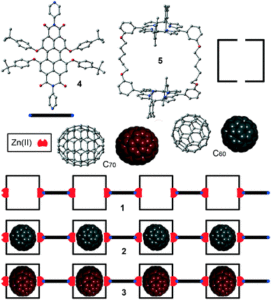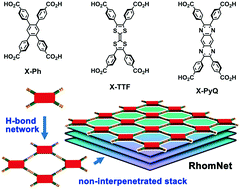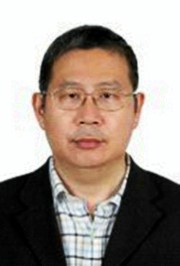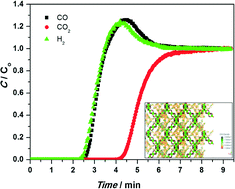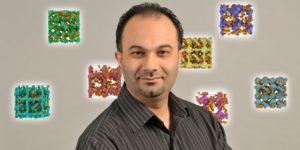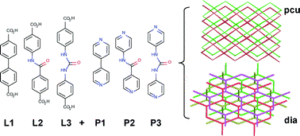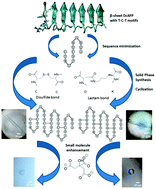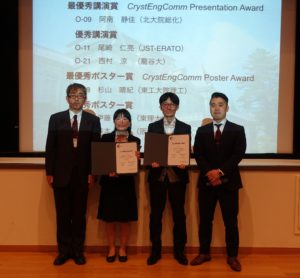We are excited to announce that Pierangelo Metrangolo (Politecnico di Milano) has been appointed as the new Chair of the CrystEngComm Editorial Board!
|
Pierangelo Metrangolo has been a full professor at Politecnico di Milano since 2011 and a Visiting Professor at VTT Technical Research Centre of Finland since 2011 and Aalto University, Finland, since 2015. He has published over 200 peer-reviewed studies, contributed 9 book chapters, and holds 11 patents. He has been awarded the “G. Ciamician” medal of the Division of Organic Chemistry of the Italian Chemical Society (2005) and the Journals Grant Award of the Royal Society of Chemistry (2005).
His research interests include supramolecular chemistry, halogen bonding, fluorine chemistry, and bio-nanomaterials. He is currently a Titular Member of the Physical and Biophysical Chemistry Division of the IUPAC and Since 2013 he has been the holder of an European Research Council grant for the project “FOLDHALO – Folding with Halogen Bonding”.
|
|
 |
When asked about the future of the crystal engineering field and the role of CrystEngComm, Pierangelo had this to say:
|
“The field of crystal engineering has rapidly evolved from the basic understanding and use of noncovalent interactions in the context of crystal packing, towards engineering the properties of new crystalline materials. The impact of such an approach onto various emerging fields has immediately become apparent. Engineered crystalline materials are now used in photovoltaics, catalysis, separations, biomass valorization, nanomedicine, among others. This is where the new generations of crystal engineers should aim at, and CrystEngComm as one of the leading journals in the field is ready to host all the latest developments.” |
|
Pierangelo has been an Editorial Board member of CrystEngComm since 2013 and we’re delighted he has agreed to become our new Chair! He takes over from Professor Leonard MacGillivray, who has led the journal since 2011 and will continue with the journal as an Advisory Board member. We would like to thank Professor MacGillivray for his work on the journal and welcome Pierangelo as our new Chair!
Editor’s Choice: Read some of Pierangelo Metrangolo’s selections of CrystEngComm articles
Here are some of Pierangelo’s choices of great articles and reviews that CrystEngComm has published recently and his thoughts on the impact that they are having on the community. All articles listed here are free to read for a limited time.
Oxidation of magnetite nanoparticles: impact on surface and crystal properties
S. P. Schwaminger, D. Bauer, P. Fraga-García, F. E. Wagner and S. Berensmeier
Article Type: Paper
DOI: 10.1039/c6ce02421a
Citation: CrystEngComm, 2017,19, 246-255
Oxidation of magnetite nanoparticles is dependent on Fe2+ ions migrating from core to surface and influences interactions with the environment.
|
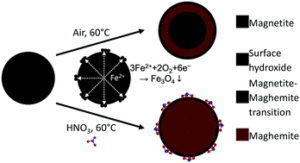 |
“Superparamagnetic iron oxide nanoparticles, i.e., magnetite (Fe3O4) and maghemite (γ-Fe2O3), are industrially used as adsorbents in separation processes, enzyme immobilization, biomedicine, and catalysis, among other applications. However, the synthetic conditions but also the environment where the particles are used, greatly limit their practical application due to their sensitivity to oxygen, which may alter both their distinct magnetic properties and particle size. Berensmeier and co-workers have thoroughly investigated the oxidation of magnetite nanoparticles under mild and harsh oxidation conditions. They demonstrated that the charge and surface reactivity can be affected by the different oxidation methods and the irreversible adsorption of acid molecules.”
Article Type: Paper
DOI: 10.1039/c6ce02314b
Citation: CrystEngComm, 2017,19, 1165-1171
Anion-exchange in CsPbBr3 nanocrystals using zinc halogenide salts could spread their emission spectra covering the whole visible spectral region.
|
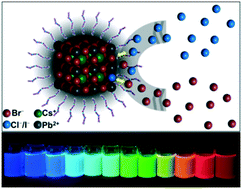 |
“Colloidal halide perovskite nanocrystals (NCs) are intensively studied for their excellent optical and opto-electronic properties. In particular, CsPbX3 NCs are excellent materials for next generation solar cells and LEDs. Importantly, changing halide combinations may result in NC photoluminescence (PL) fine tuning over the entire visible spectral region. Jiang and co-workers have discovered that zinc halogenide (ZnX2) is a very convenient halide source for anion exchange. The exchange proceeds at room temperature within seconds (for Br to I) and tens of seconds (for Br to Cl) and allow to extend the NC PL spectra to the near-violet region and the red region. Their results represent a further step towards CsPbX3 NCs commercialization.”
MOF catalysts in biomass upgrading towards value-added fine chemicals
Annika Herbst and Christoph Janiak
Article Type: Highlight
DOI: 10.1039/c6ce01782g
Citation: CrystEngComm, 2017, 19, 4092-4117
The development of new synthetic routes from biomass sources towards already existing molecules, which are then called bio-based molecules, or the transformation of biomass into new building blocks and materials will be of great impact. This review presents a critical comparison between MOFs and other catalysts (e.g. zeolites) for biomass transformation.
|
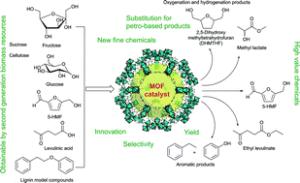 |
“Upgrading biomass into fuel and fine chemicals may reduce the dependence on fossil fuels. Metal Organic Frameworks (MOFs) were introduced as catalysts for biomass valorization only about five years ago, as efficient alternative to zeolites. Janiak and coworkers have reported a critical comparison between MOFs and zeolites for biomass transformation and valorization to platform chemicals. It was shown that MOFs may display a similar or better activity in selected reactions than heterogeneous catalysts such as zeolites or metal oxides. In particular, their high synthetic and structural tunability especially distinguish MOFs from zeolites and metal oxides and are worthy of further development to enable new catalytic pathways to sustainable fine chemicals.”
Modular assembly of porous organic cage crystals: isoreticular quasiracemates and ternary co-crystal
Srinu Tothadi, Marc A. Little, Tom Hasell, Michael E. Briggs, Samantha Y. Chong, Ming Liu and Andrew I. Cooper
Article Type: Paper
DOI: 10.1039/c7ce00783c
Citation: CrystEngComm, 2017, 19, 4933-4941
Co-crystallisation of helically chiral porous organic cage molecules has enabled the formation of isoreticular quasiracemates and a rare porous organic ternary co-crystal.
|
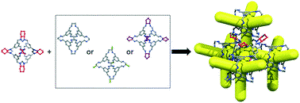 |
“Porous organic cages are shape persistent molecules with intrinsic cavities that accommodate guest molecules. The accessibility of the cavity is dictated by the dimensions of the cage window, but also determined by how the cages pack in the solid state. Therefore, not only the chemical structure of the cage but also their crystal packing may determine their function. Cooper and co-workers have described a general strategy for controlling cage to cage co-crystal assembly using chiral recognition. They were also able to prepare a rare ternary cage co-crystal.”
The next dimension of structural science communication: simple 3D printing directly from a crystal structure
Peter A. Wood, Amy A. Sarjeant, Ian J. Bruno, Clare F. Macrae, Helen E. Maynard-Casely and Matthew Towler
Article Type: Paper
DOI: 10.1039/c6ce02412b
Citation: CrystEngComm, 2017, 19, 690-698
Here we illustrate how to easily produce 3D printable model files from any standard structural model using the freely available visualisation program Mercury.
|
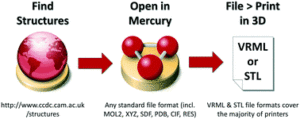 |
“3D printing is now readily accessible to anyone without any effort beyond the generation of a 3D model file. 3D printing of physical models directly from accurate experimental outputs has the potential to produce models of any type of chemistry. This is important in science, because there is evidence that a large proportion of the population learn more effectively when presented with physical 3D models, rather than virtual 3D or 2D representations in books or on screens. Wood and co-workers have reported for the first time that 3D models can be easily 3D printed from any standard structural model file using the well-known, freely available structure visualization program, Mercury. Their approach may profoundly impact the way structural chemistry is communicated to society.”
Submit your research or reviews to CrystEngComm – see our author guidelines for information on our article types or find out more about the advantages of publishing in a Royal Society of Chemistry journal.
Comments Off on Announcing the new Chair of the CrystEngComm Editorial Board: Pierangelo Metrangolo!
